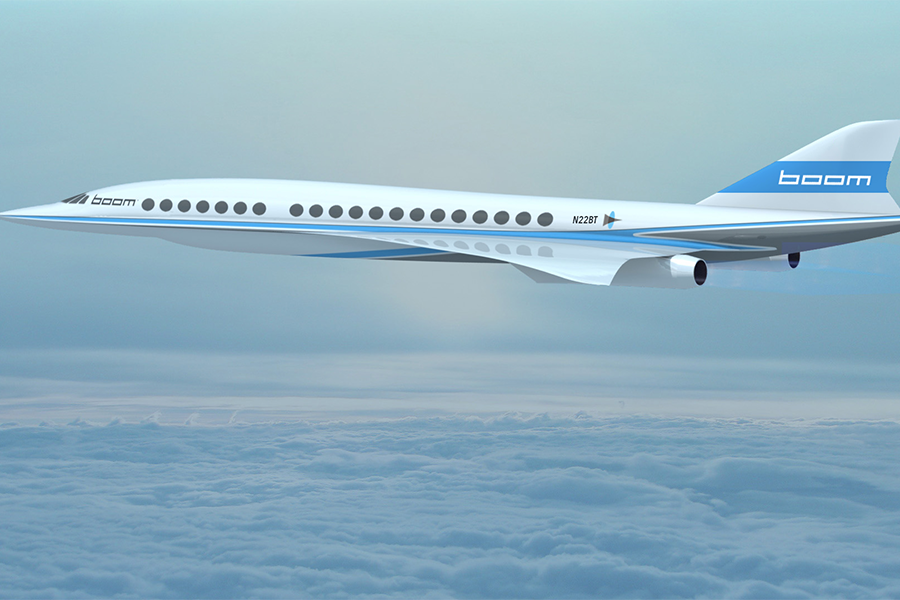NYC to London in 3.4 hours? Richard Branson backs supersonic startup
Loading...
A Denver, Colo. startup, Boom Technology, wants to build a supersonic airplane for business travelers that, for a roundtrip price of $5,000, could get them from New York to London in 3.4 hours. This is half the time it takes to fly the route now.
Boom says its 40-seat supersonic planes will fly 2.6 times faster than any other current airliner (and faster than the speed of sound), at 1,451 miles per hour. At their cruising altitude of 60,000 feet, about twice that of current planes, Boom passengers will be able to see the curvature of the earth, reports Bloomberg.
“Imagine departing from New York at 6 a.m., and landing at Heathrow by 2:30 p.m. London time,” Boom founder Blake Scholl, a 35-year-old who worked at Amazon and then sold a shopping app to Groupon, told The Guardian. “You’ll be able to make afternoon meetings, you can stay until 9:30 p.m., have a full productive day, and and back in New York at 8 p.m. [local time] so you can tuck your kids into bed,” he said.
Though it’s a far-off scene, it has promise, given that Boom says that a London-based airline is interested in buying $2 billion worth of its jets, and that Richard Branson’s spaceflight company Virgin Galactic is backing it. Mr. Branson’s rocket-building company, which wants to commercialize civilian space travel, will help Boom with the engineering, design, manufacturing, and flight tests. It also will have an option to buy the first 10 of Boom’s aircraft, The Denver Post reported.
Branson, who has pledged (though not delivered) millions of dollars towards the development of a low-carbon fuel and has invested millions in other low-carbon technologies to offset his carbon-intensive businesses, such as Virgin Airlines, hopefully will also help the startup develop a supersonic plane that has minimal impact on the environment. As of now, the planes burn through massive amounts of fuel and emit gases and particles with a yet unknown impact on the ozone.
“Environmental questions about the impact of supersonic aircraft emissions on the ozone layer contributed to the US government’s 1971 decision to cut funding for the development of a supersonic civil transport,” a 2014 news release from the Laboratory for Aviation and the Environment at the Massachusetts Institute of Technology said. “The use of advanced engine designs with improved emissions characteristics is expected to mitigate the environmental impact, but the potential for adverse climate and ozone impacts remains an area of concern,” said the lab.
In June, MIT received $1.2 million grant from NASA to study the environmental impact of supersonic aircraft to “help overcome the remaining barriers to commercial supersonic flight,” said the agency in the funding announcement.
Several other companies, including Boeing and Lockheed Martin, are also developing new supersonic planes.







